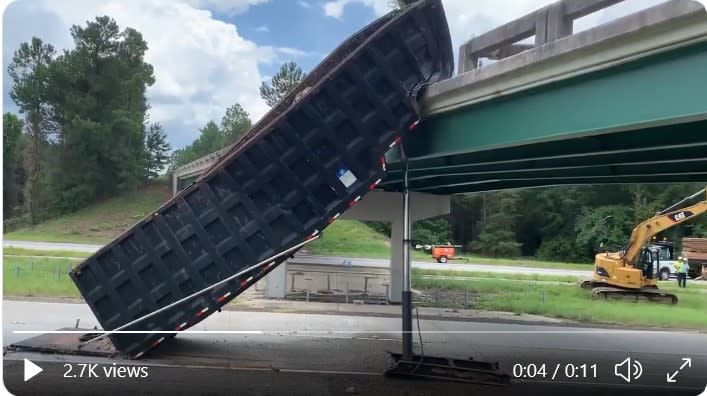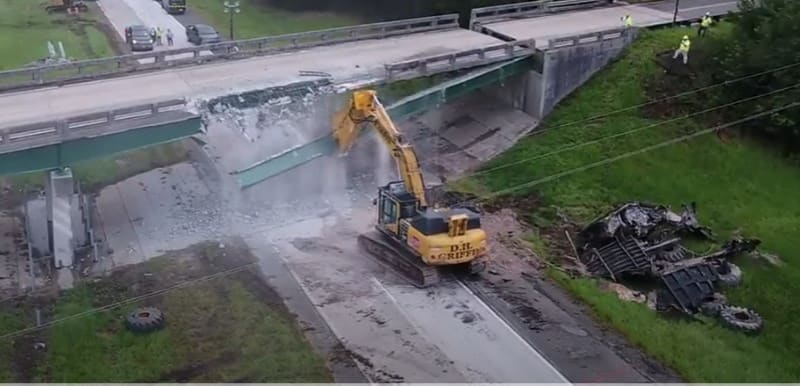Retiredat46
Member
The SR86 bridge over I16 in Treutlen County, Georgia, was shifted six feet when hit by raised dump trailer on July 15, 2021.

Efforts are underway to demolish the entire bridge so the I16 can be partially reopened by July 17.
Wow! I can see demolishing and replacing the concrete deck, but it seems like a large part of the steel structure could be saved and moved back into place. It would be interesting to see some pictures of the underside of the bridge and learn the justification for a complete demolition.

Efforts are underway to demolish the entire bridge so the I16 can be partially reopened by July 17.
Wow! I can see demolishing and replacing the concrete deck, but it seems like a large part of the steel structure could be saved and moved back into place. It would be interesting to see some pictures of the underside of the bridge and learn the justification for a complete demolition.

